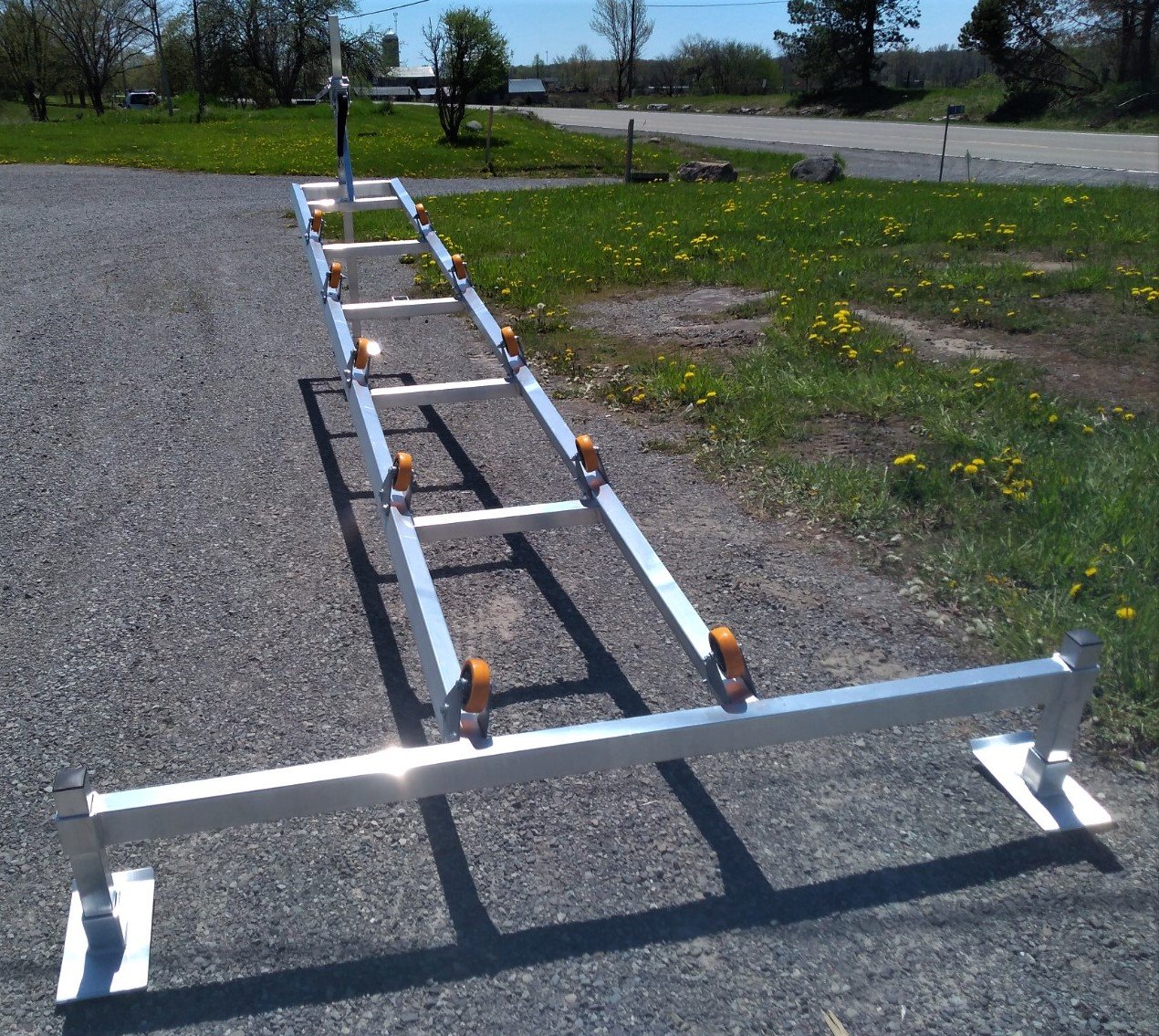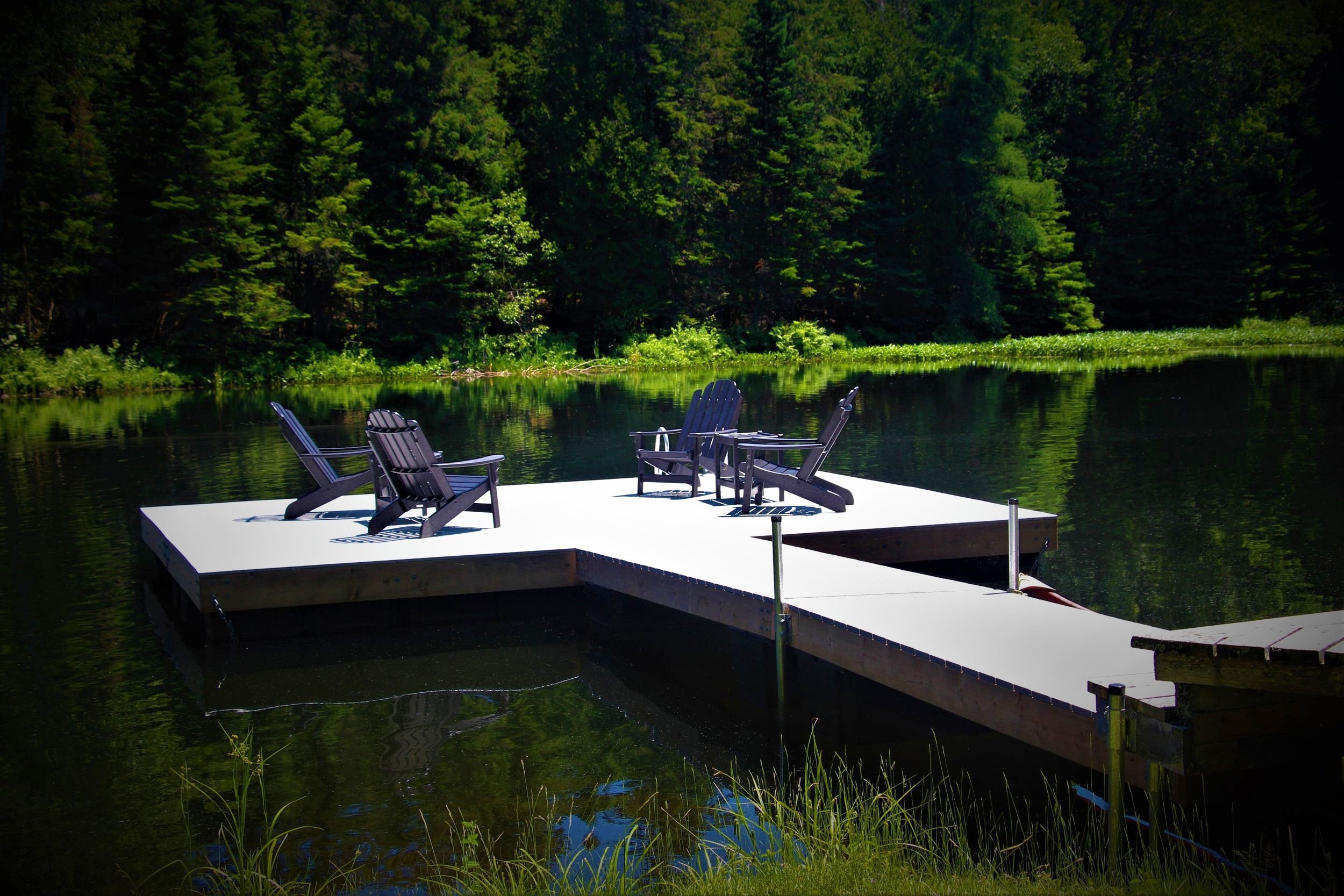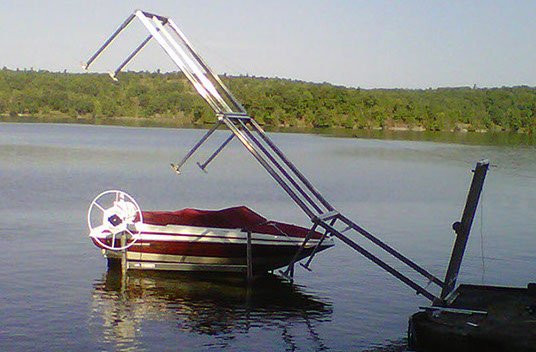Haliburton’s Best Docks by The Dock Spot
Trust us to build you a quality dock to suit your needs and budget with exceptional service.
Our Products
-

Wooden Floating Docks
Available in Western Red Cedar, PVC or Pressure Treated Wood, our wooden floating docks are designed for multiple configurations and easy extension of your docking system. Our wooden swim rafts are built for your enjoyment and are available in multiple sizes and our party barge never disappoints!
-

Aluminum Floating, Legged & Tower Docks
Aluminum docks are lightweight and maintenance free. Legged docks are built for water depths up to 6-feet with firm lake bottoms and tower docks are ideal for those who want easy seasonal setup and removal. Aluminum floating docks are designed for multiple configurations and easy add-on.
-

Roller Ramps, Landings & Other Accessories
We offer ramps and landings to suit a variety of needs from boats to kayaks and other water toys. Kayak or canoe landings can be mounted on any dock and keep you safe. We also carry all the other items you may need to make your dream dock a reality.
Buy or rent the latest in personal watercraft from HydroBoards.ca
Experience the thrill of riding a Jet Board. Think self-powered wakeboard!
Pick up of both sales and rentals are available in Tory Hill.
Dock Delivery & Installation
The Dock Spot offers the very best in professional dock services to compliment your valuable waterfront property. We deliver and install your new dock, show you how it works, and even explain how to winterize it. You can count on us before, during & after every sale.
Our Warranty
We have strived, since 1989, to build top quality, durable, docks at an affordable price, with exceptional service.
The Dock Spot warrants our docks will be free from defects in the workmanship and material, excluding wood, for 5 (Five) Years from the date of purchase. We strive to use the best lumber available but cannot warranty against splitting, cracking, knots or slivers. Components and options which carry their own manufacturers’ warranty are excluded. Your warranty covers all parts and hardware. There will be an added charge for labour and installation. There is no other warranty, expressed or implied. The Dock Spot is not liable for incidental or consequential damages or injuries of any kind due to installation, removal, use, or misuse of one of our purchased products. Our warranty is solely applicable to the original purchaser.
This warranty is void when misuse or neglect is the cause of damage or defect, which shall be determined by 2488631 Ontario Inc. o/a The Dock Spot in its sole discretion. The purchaser or customer agrees to provide The Dock Spot with sufficient access for its employees and other agents to determine the cause of damage or defect.
We are committed to satisfying our customer’s needs with quality, affordability and service.
About Us
The Dock Spot’s owner, Owen Trefry takes great pride in creating solutions for your valuable waterfront property. Along with our Westport, Ontario based sister-company Rideau Docks and their Canadian-made aluminum leg docks, aluminum floating docks and tower docks, The Dock Spot strives to produce and sell quality wooden floating docks and dock accessories at an affordable price with exceptional service in the Haliburton Highlands and surrounding areas.
We will work closely with you to provide your ideal dock solution.
Our clients rave about our products and service:
Don & Pat:
“Thank you for the exceptional service. A pleasure doing business with you folks.”
Todd:
“I am very pleased with the dock!”
Susan:
“The guys did a great job today... Very pleasant, professional and knowledgeable… Much appreciated.”
Dale:
“I just want to say how pleased I am with the professional way the dock was installed and built. I will pass on recommendations to my friends.”
Piotr:
“The dock looks great and the installation crew was very professional and did an excellent job. We already have received compliments on the dock. I really enjoyed working with your company. I am sure to pass the word around the lake."
Jerry & Victoria:
“Wow, you guys are awesome!!!”








